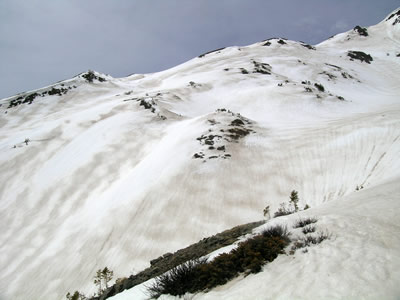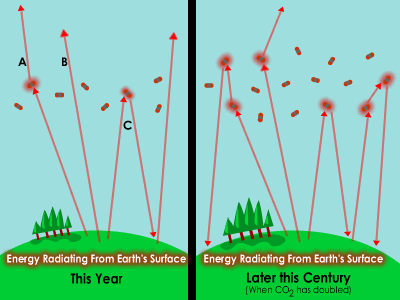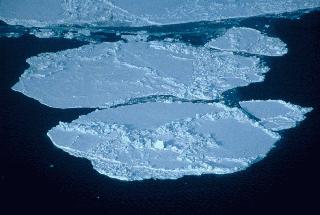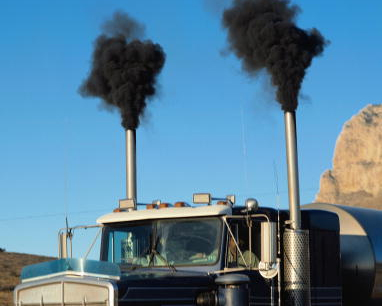This picture is of the Andes Mountains between Chile and Argentina in South America. It was taken from the International Space Station. Do you see the glaciers and snow on top of the mountains? Do you see the lakes in the valleys between mountains?
Click on image for full size
NASA Earth Observatory
Albedo
This picture was taken from high above our planet. Looking at the Earth from very far away like this we can see that some parts of our planet look light in color, and some parts look dark.
The color of these parts affects what happens when sunshine hit them. If the Sun's rays hit a dark part, like an ocean or forest, most of the rays are absorbed. Very few are reflected back out to space. If the Sun's rays hit a light colored part of the Earth's surface, like snow or ice, most of the rays are reflected back out to space. Only a few rays are absorbed. The amount of the Sun's energy that is reflected is called albedo.
Dark colored things like oceans and forests have low albedo. Light colored things like snow and ice have very high albedo. About two out of three of the Sun's rays that get to Earth are reflected out to space and the other one is absorbed.
The albedo of each planet or moon depends on what is at its surface. Some planets are so far away that they are difficult to see with telescopes. But scientists can figure out what the planet is made of if they can measure its albedo.
Earth's climate depends on how many of the Sun's rays are reflected back out to space and how many are absorbed. As our planet gets warmer, more snow and ice melt. Fewer of the Sun's rays are reflected out to space. More are absorbed. This is causing even more warming.
Clouds affect albedo too. They have a high albedo and reflect solar energy out to space. If there were no clouds, Earth's average albedo would drop by half.
You might also be interested in:

Scientists are learning about how dust from wind storms is affecting the snow in the mountains of Colorado. Occasionally, dry winds blow in from the southwestern United States, and when this happens, small
...more
Not all of the energy from the Sun that arrives at Earth can leave easily. After being transformed into heat, it can become trapped by certain gases in the air. This is a natural process called the greenhouse
...more
All winter long in the chilly Arctic, sea ice grows larger as the ocean water freezes. A blanket of fresh white snow covers it. The white snow reflects the sunshine that hits it. As summer begins, the
...more
Dust blown into the mountains of Colorado is causing snow to melt faster in the springtime. This has an impact on plants that live on high mountaintops. The dust is from the desert in the southwest United
...more
Mark Flanner, a scientist who studies climate change, conducted a study that found that snow melts faster during the spring in Europe and Asia than in North America. Flanner and his colleagues think that
...more
Have you ever had a fire in your fireplace? Burning logs leaves a black powdery material behind called soot. Soot is also made when we burn coal, gas or oil for energy. Humans have been burning these
...more
The Sun Climate can change if there is a change in the amount of solar energy that gets to Earth. A change in the solar cycle can impact climate. The effect is too small to be the reason that global warming
...more















